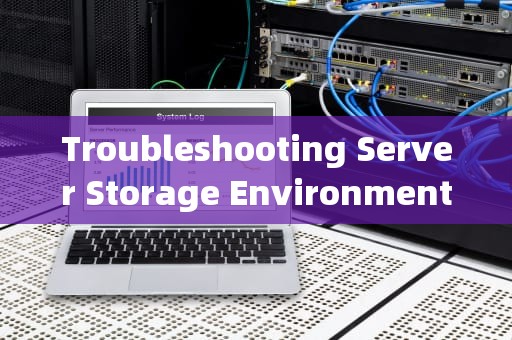In today's digitally driven world, the performance and reliability of server storage systems are crucial to maintaining seamless operations for businesses of all sizes. Whether you're managing a small business network or a large enterprise data center, encountering issues with your server storage environment can lead to significant downtime, data loss, and productivity hits. This article delves into common server storage problems, their causes, and effective troubleshooting strategies to ensure your storage infrastructure remains robust and reliable.

Understanding Server Storage Environment Issues
Server storage environments encompass various components such as hard drives, solid-state drives (SSDs), network-attached storage (NAS), storage area networks (SAN), and software-defined storage solutions. Each element plays a vital role in data management, accessibility, and redundancy. However, several factors can contribute to storage environment problems, including:
1、Hardware Failures: Over time, physical components like hard drives can fail due to wear and tear, manufacturing defects, or power surges.
2、Software Corruption: File system errors, driver issues, or bugs in storage management software can disrupt normal operations.
3、Network Bottlenecks: Inefficient network configurations or bandwidth limitations can slow down data access speeds.
4、Configuration Errors: Misconfigurations in RAID setups, permissions, or storage allocations can lead to data inaccessibility or loss.
5、Capacity Exhaustion: Running out of storage space can halt system functions and require immediate attention.
6、Security Threats: Malware, ransomware, and unauthorized access attempts can compromise data integrity and availability.
7、Environmental Factors: Power fluctuations, temperature extremes, and dust accumulation can physically damage storage devices.
Common Symptoms of Server Storage Problems
Identifying the root cause of storage issues often starts with recognizing these common symptoms:
Slow Performance: Noticeably slower file transfers, application response times, or system boot times.
Frequent Crashes: Unexpected system reboots or application crashes during data operations.
Error Messages: Alerts or error codes related to disk read/write failures, missing files, or corrupted data.
Unusual Noises: Clicking, grinding, or other abnormal sounds from hard drives.
Inaccessible Data: Files or volumes that suddenly become unreadable or disappear without explanation.
High Resource Utilization: Consistently high CPU, memory, or disk usage even during idle periods.
Troubleshooting Strategies
Addressing server storage environment issues requires a systematic approach. Here are some key steps to diagnose and resolve common problems:
1.Initial Assessment and Documentation
Log Analysis: Review system logs for error messages, warnings, or unusual activity patterns.
Event Viewer: Use Windows Event Viewer or equivalent tools on other operating systems to pinpoint when and where errors occurred.
Baseline Performance: Compare current performance metrics against historical data to identify deviations.
2.Hardware Diagnostics
SMART Status: Check Self-Monitoring, Analysis, and Reporting Technology (SMART) data for early signs of drive failure.
Disk Health Checks: Utilize utilities like CHKDSK (Windows), badblocks (Linux), or third-party tools to scan for disk errors.
Component Testing: If possible, test suspect hardware components in another system to isolate the fault.
3.Software and Configuration Review
Update Drivers: Ensure all storage-related drivers and firmware are up-to-date.
Check File Systems: Repair or rebuild corrupted file systems using appropriate commands (e.g.,fsck on Linux).
Verify Permissions: Ensure proper access rights are set for users and applications interacting with the storage.
Reconfigure RAID: Rebuild or reconfigure RAID arrays if there are indications of hardware failure within the array.
4.Network Optimization
Bandwidth Testing: Measure network throughput to identify potential bottlenecks.
Configuration Audit: Review network settings, switch port configurations, and VLAN setups for optimization opportunities.
Firmware Updates: Apply firmware updates to network adapters and switches to enhance compatibility and performance.
5.Capacity Management
Storage Inventory: Regularly monitor storage usage and forecast future needs to prevent exhaustion.
Data Archiving: Implement archiving strategies for seldom-used data to free up primary storage space.
Expansion Planning: Plan for scalable storage solutions that can grow with your data requirements.
6.Security Enhancements
Antivirus Scans: Run comprehensive antivirus scans to detect and remove malware infections.
Patch Management: Keep all systems and software updated with the latest security patches.
Access Controls: Reinforce user authentication mechanisms and implement least privilege principles.
7.Environmental Controls
Power Quality: Use uninterruptible power supplies (UPS) and surge protectors to safeguard against power irregularities.
Temperature Regulation: Maintain server rooms within recommended temperature and humidity ranges to prolong equipment lifespan.
Cleanliness: Regularly clean servers and storage devices to prevent dust buildup that can cause overheating.
Preventive Measures
While reactive troubleshooting is essential, implementing preventive measures can significantly reduce the likelihood of storage environment issues:
Regular Maintenance: Schedule routine checks and maintenance tasks for hardware and software components.
Monitoring Systems: Deploy monitoring tools to track performance metrics, error rates, and capacity usage in real-time.
Backup Strategies: Maintain regular backup schedules and test restore processes to ensure data recoverability.
Disaster Recovery Planning: Develop and periodically test disaster recovery plans to minimize downtime in case of emergencies.
User Education: Train staff on best practices for data handling, security protocols, and incident reporting.
Conclusion
Server storage environment issues can arise from a multitude of sources, but with a proactive approach to monitoring, maintenance, and troubleshooting, many problems can be prevented or quickly resolved. By understanding the common causes and symptoms of storage issues and following a structured troubleshooting methodology, IT professionals can ensure the stability, performance, and security of their organization's critical data assets. Remember, a well-maintained storage infrastructure is the backbone of any successful business operation in today's data-centric landscape.
随着互联网的普及和信息技术的飞速发展台湾vps云服务器邮件,电子邮件已经成为企业和个人日常沟通的重要工具。然而,传统的邮件服务在安全性、稳定性和可扩展性方面存在一定的局限性。为台湾vps云服务器邮件了满足用户对高效、安全、稳定的邮件服务的需求,台湾VPS云服务器邮件服务应运而生。本文将对台湾VPS云服务器邮件服务进行详细介绍,分析其优势和应用案例,并为用户提供如何选择合适的台湾VPS云服务器邮件服务的参考建议。

工作时间:8:00-18:00
电子邮件
1968656499@qq.com
扫码二维码
获取最新动态
